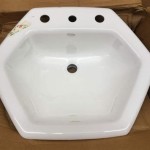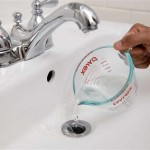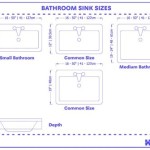Replacing a Bathroom Ceiling Exhaust Fan
A bathroom ceiling exhaust fan plays a crucial role in maintaining a healthy and comfortable indoor environment. It effectively removes moisture, odors, and excess heat, preventing mold growth, mildew, and unpleasant smells. Over time, exhaust fans can become noisy, inefficient, or even malfunction. When this happens, replacing the fan is a necessary step to restore optimal ventilation in the bathroom. This article will provide a comprehensive guide to replacing a bathroom ceiling exhaust fan, covering the essential steps, tools required, and safety precautions.
Understanding the Importance of a Bathroom Exhaust Fan
A well-functioning bathroom exhaust fan is essential for several reasons. It helps to:
- Remove Moisture: Bathrooms generate significant amounts of moisture from showers, baths, and other activities. The exhaust fan removes this moisture, preventing condensation and potential problems like mold growth and water damage.
- Eliminate Odors: Bathroom odors can be unpleasant and linger if not properly ventilated. The fan draws out odors, leaving a fresh and clean environment.
- Reduce Humidity: High humidity levels can create a breeding ground for bacteria, dust mites, and other allergens. The fan helps to control humidity levels, improving air quality and promoting a healthier living space.
- Prevent Heat Buildup: Hot showers and baths release heat into the bathroom. The exhaust fan draws out this excess heat, preventing discomfort and potentially reducing energy consumption.
By understanding the importance of a bathroom exhaust fan, you can appreciate the need for regular maintenance and replacement when necessary.
Steps to Replace a Bathroom Ceiling Exhaust Fan
Replacing a bathroom exhaust fan is a relatively straightforward DIY project that most homeowners can tackle with the right tools and instructions. Here are the steps involved:
Step 1: Gather Necessary Tools and Materials
Before starting the replacement process, ensure you have the following tools and materials:
- New bathroom exhaust fan
- Screwdriver
- Wire strippers
- Wire connectors (wire nuts)
- Voltage tester
- Ladder
- Safety glasses
- Work gloves
Step 2: Turn Off Power to the Fan
Safety is paramount during any electrical work. Locate the circuit breaker for the bathroom fan and turn it off. Confirm the power is off by testing the fan's wiring with a voltage tester.
Step 3: Remove the Old Fan
Remove the old fan by following these steps:
- Remove the fan cover by unscrewing the screws holding it in place.
- Disconnect the wiring. Carefully detach the wires connected to the old fan. Note the color of each wire for proper reconnection later.
- Remove the mounting screws holding the fan to the ceiling. Carefully lower the fan down and remove it from the ceiling.
Step 4: Install the New Fan
Install the new fan using the following steps:
- Attach the mounting bracket to the ceiling, ensuring it is level and secure.
- Connect the wiring. Connect the new fan's wires to the existing wiring, matching the colors (usually black to black, white to white, and green to ground). Use wire connectors to secure the connections.
- Secure the fan to the mounting bracket. Align the fan with the bracket and tighten the mounting screws firmly.
- Reattach the fan cover. Align the cover with the fan and screw it back in place.
Step 5: Turn On Power and Test the Fan
Before turning on the power, double-check all wiring connections for proper security and accuracy. Once satisfied, carefully turn on the circuit breaker. Turn on the fan and test its functionality, ensuring it runs smoothly and without any unusual noises.
Key Considerations for Replacing a Bathroom Exhaust Fan
When replacing a bathroom exhaust fan, consider the following factors:
Fan Size and CFM
Choose a fan with the right size and CFM (cubic feet per minute) rating. The CFM rating indicates the volume of air the fan can move. A higher CFM is generally better, but it depends on the size of your bathroom and its ventilation needs. Consult a professional or refer to online resources for recommendations on the appropriate CFM for your bathroom.
Noise Level
Consider the fan's noise level, especially if the bathroom adjoins a bedroom or other living space. Look for fans with a low sones rating, indicating a quieter operation.
Energy Efficiency
Choose a fan that is energy-efficient. Look for Energy Star-rated models that consume less energy, saving you money on your utility bills.
By following these steps and considerations, you can successfully replace your bathroom exhaust fan and ensure optimal ventilation in your bathroom.

Installing An Exhaust Fan During A Bathroom Remodel Energy Vanguard

Bath Fan Replacement In 10 Minutes Or Less

Remove Install A Bathroom Fan Grille In 1 Min

How To Install A Bathroom Fan Homeserve Usa

Bath Exhaust Fan Installation San Jose Ca Repair Replacement

Replace A Bathroom Fan In Finished Ceiling It S Husband Thing

How To Install A Bath Exhaust Fan

Average Cost To Install A Bathroom Fan Forbes Home

Air Sealing Bathroom And Kitchen Exhaust Fans Building America Solution Center

Quick Tip 23 Fixing A Drip At The Bathroom Fan Misterfix It Com
Related Posts







